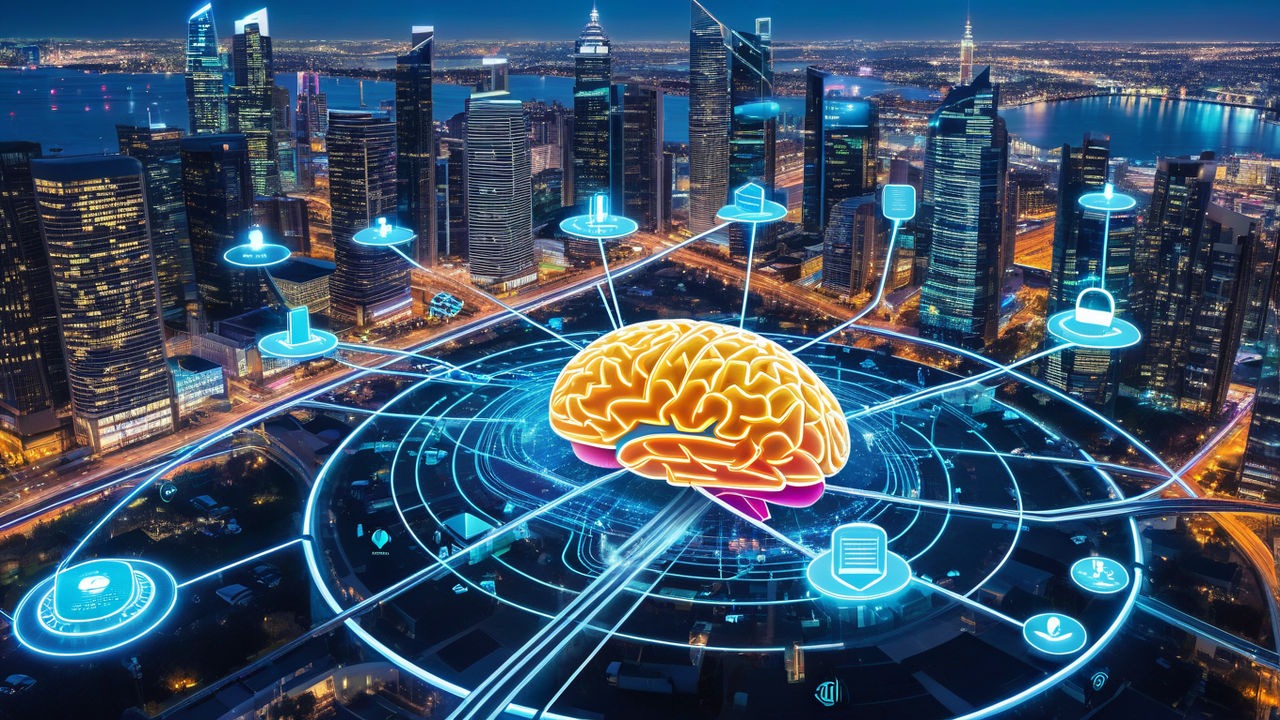Enhance Real-Time Decisions: Unleashing Edge AI in IoT Smart Devices Today
Introduction: The Fusion of Edge AI and IoT in Smart Devices
The combination of Edge AI and IoT (Internet of Things) is transforming the way smart devices operate. By enabling real-time decision-making, edge AI ensures that IoT devices can process vast amounts of data on the spot without relying on cloud servers. For developers, this brings unprecedented opportunities to create faster, more efficient, and responsive applications.
In this blog post, we will dive deep into how Edge AI is enhancing real-time decisions in IoT for smart devices, and why this trend is revolutionizing the way we interact with technology today.
What is Edge AI, and How Does It Differ from Traditional AI?
Edge AI refers to the deployment of artificial intelligence algorithms on devices that are located at the “edge” of the network—closer to the data source, rather than relying on centralized cloud servers. Unlike traditional AI, which involves sending data to the cloud for processing, edge AI enables devices to analyze and respond instantly.
By reducing latency, developers can create applications that offer faster performance, which is critical for real-time tasks such as autonomous driving or real-time health monitoring in wearables. This shift allows developers to enhance real-time applications with minimal lag.
Key advantages of Edge AI over traditional AI include:
- Reduced Latency: Edge AI ensures that decisions are made locally, making it ideal for time-sensitive applications.
- Enhanced Privacy: Data processed on the device reduces reliance on cloud infrastructure, keeping sensitive information secure.
As developers, understanding the shift from traditional AI to edge AI will allow you to harness these benefits effectively.
Role of Edge AI in IoT: Real-Time Decision Making
When combined with IoT, edge AI creates a robust framework for smart devices to make decisions in real-time. IoT devices, like smart thermostats, wearable health devices, or connected cars, generate immense amounts of data every second. By processing this data locally using edge AI, these devices can instantly react to environmental changes without delay.
Imagine a connected car detecting obstacles in real-time and adjusting its route instantly, or a wearable health device tracking your vitals and alerting you of abnormalities on the spot. These are just two examples of IoT-enabled smart devices enhanced by edge AI’s capability to make faster, more accurate decisions.
If you’re working on IoT projects, integrating edge AI will allow you to boost real-time decision-making in ways you may have never imagined. It’s an innovation that is revolutionizing smart device development.
Challenges and Solutions: Implementing Edge AI in IoT Development
Despite its numerous benefits, implementing Edge AI in IoT devices comes with a set of challenges that developers need to navigate. These challenges include the cost of specialized hardware, managing limited computational resources, and ensuring that security measures are up to date.
To overcome these hurdles, developers can:
- Leverage AI-Specific Hardware: Opt for devices with AI-specific chips like NVIDIA’s Jetson or Intel’s Movidius to handle high-speed data processing.
- Optimize Software for Edge: Use lightweight algorithms that require fewer computational resources, ensuring that your application runs smoothly on IoT devices.
- Secure Data Locally: Implement robust data encryption protocols to secure sensitive data processed on the edge.
With careful planning, you can unlock the full potential of edge computing in IoT development, pushing the boundaries of smart devices’ capabilities.
Key Applications of Edge AI in IoT: Unlocking New Possibilities
Edge AI’s ability to process data at lightning speed is paving the way for a variety of innovative applications in IoT devices. Here are a few key applications:
- Smart Cities: IoT sensors embedded in public infrastructure, such as traffic lights or surveillance cameras, use edge AI to analyze data in real-time, optimizing traffic flow or detecting security threats instantly.
- Healthcare: Wearable devices powered by edge AI can monitor vital signs, detect abnormalities in real-time, and provide instant feedback, reducing the time it takes to act in critical situations.
- Retail: Smart shelves with embedded sensors can detect when inventory is running low and send real-time updates, improving supply chain efficiency.
These applications showcase how AI’s integration with IoT is pushing technological boundaries to create a future of smarter, more intuitive devices.
The Future of Edge AI in IoT: Where Are We Headed?
As 5G networks continue to roll out globally, the potential for edge AI in IoT will skyrocket. With faster, more reliable networks, developers can look forward to an explosion of innovation where more devices can operate independently, without cloud reliance.
Edge AI will also become more integral to everyday applications as smart homes, connected cars, and industrial IoT devices gain mass adoption. Developers should stay ahead by exploring AI-powered IoT applications that enhance real-time decision-making and create more personalized user experiences.
Discover more from Just-CO
Subscribe to get the latest posts sent to your email.




